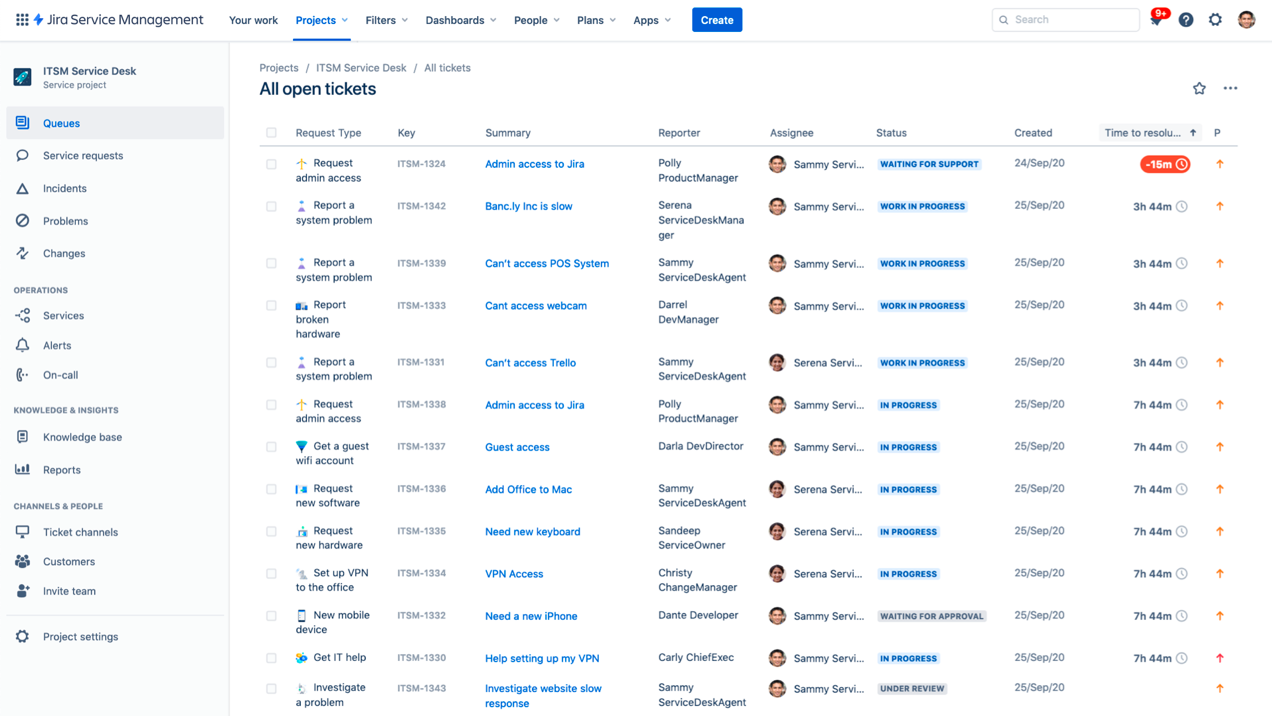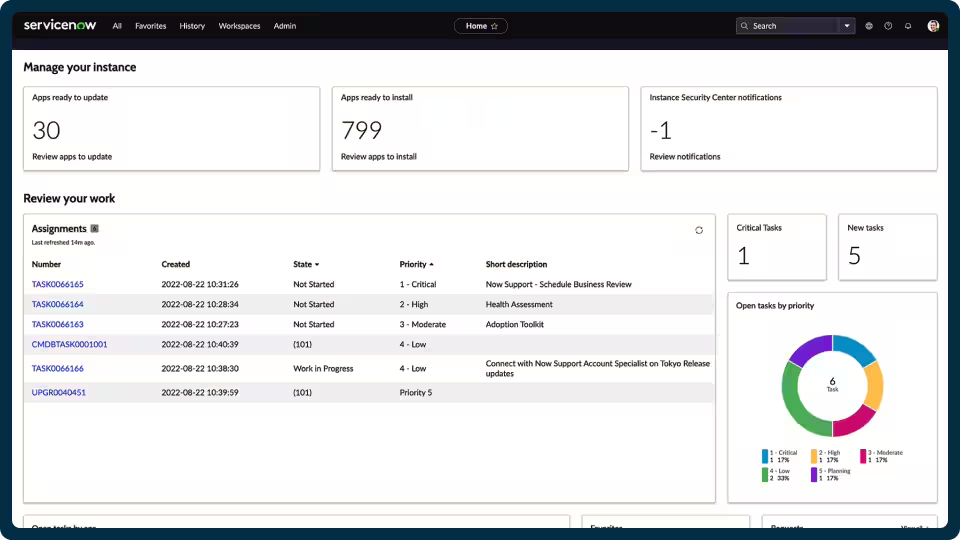When choosing an ITSM platform, the decision often comes down to Jira Service Management vs ServiceNow. Both are top-tier solutions that help organizations manage incidents, service requests, changes, problems, and more. But they approach service management from different angles.
Jira Service Management focuses on usability, fast implementation, and DevOps alignment. ServiceNow offers a large-scale enterprise platform built to support multiple departments and advanced workflows. So which tool is right for your team?
This article breaks down the comparison in detail, including features, use cases, pricing, customization, integrations, and how you can connect both platforms using Getint.
What Are Jira Service Management and ServiceNow?
Jira Service Management (JSM) is Atlassian’s solution for service and support teams. It builds on Jira Software and adds ITSM features like request management, incident management, change management, and a service desk setup. It’s widely used by development teams, support teams, and even business teams like HR and legal.

ServiceNow is a comprehensive platform for enterprise service management. It offers full ITIL-aligned modules including incident management, problem management, change management, asset management, and a powerful configuration management database (CMDB). ServiceNow is widely used by large enterprises with complex service delivery and support needs.

ServiceNow vs Jira: Core ITSM Capabilities Compared
Incident Management
Both platforms support full incident management workflows. Jira Service Management offers customizable incident types, automation, SLAs, and real-time status tracking. ServiceNow provides AI-driven incident triage and automatic assignment using its Now Platform. Both are effective, but ServiceNow leans into enterprise use cases.
Change Management
Jira Service Management integrates tightly with development tools and CI/CD pipelines, making it ideal for fast-moving change environments. You can create change requests from within a release or deployment. ServiceNow, on the other hand, offers structured change management with risk assessments, scheduling, CAB approvals, and policies.
Problem Management
Both platforms offer tools to identify root causes and link problems to incidents. Jira uses its native issue hierarchy to manage this, while ServiceNow supports problem templates, impact analysis, and known error databases. For problem management, both systems are comparable, though ServiceNow offers more depth for large operations.
Service Request Management
Jira Service Management includes a service desk setup with request types, forms, workflows, and approval flows. It supports IT, HR, finance, and other business teams. ServiceNow provides a full service request catalog and a self service portal that supports complex multi-step requests and role-based forms.
Knowledge Management
Knowledge articles are built into both platforms. Jira integrates with Confluence for content creation and access from the portal. ServiceNow includes article templates, feedback loops, and auto-suggestions via AI. Both platforms support knowledge management, but ServiceNow’s model is more scalable.

Self-Service, Virtual Agents, and Portals
Jira includes self service portals that are easy to configure for teams and end users. Users can submit requests, check status, and browse the knowledge base. It’s simple and works well.
ServiceNow takes self service further. Its portal includes a virtual agent, automated workflows, and dynamic forms. It supports multiple brands or departments from a same platform, useful for global organizations or large enterprises.
Asset and Configuration Management
Jira uses Insight for asset management and basic CMDB features. It allows teams to link tickets to assets, define asset types, and run simple queries.
ServiceNow offers full-scale configuration management, with auto-discovery, dependency mapping, asset lifecycle tracking, and integration with IT operations. It’s the more complete solution, especially for complex environments.
User Experience and Interface
Jira’s user friendly interface is one of its strengths. Teams can set up a project, define workflows, and be up and running quickly. It’s well-suited for teams without deep technical experience.
ServiceNow is powerful but comes with a steeper learning curve. It offers a wide range of features that require setup and ongoing maintenance. It’s less accessible out of the box unless you have in-house admins or a partner.
Customization and Automation
Jira allows for extensive customization via workflows, fields, screens, and marketplace apps. With Atlassian Marketplace, you can add reporting, time tracking, testing tools, and more.
ServiceNow enables extensive customization via scripting, workflows, and its App Engine Studio for app development. It also supports automation capabilities across IT operations and business teams.
Integrations
Jira integrates natively with development tools like Bitbucket, GitHub, Slack, and Jenkins. This makes it the go-to option for DevOps teams. The Atlassian Marketplace includes thousands of other tools and apps.
ServiceNow has fewer out-of-the-box DevOps integrations, but it connects well to legacy systems, ERPs, HR tools, and monitoring platforms. It also offers its servicenow store for certified integrations.
AI Capabilities
Jira Service Management offers new AI features like summarizing tickets, generating responses, and surfacing relevant documentation. It’s simple, fast, and helpful.
ServiceNow’s AI capabilities include virtual agent, natural language search, predictive ticket routing, and automation powered by machine learning. It’s built into their servicenow itsm and works across their entire platform.
JSM vs ServiceNow: Pricing and Plans
Jira Service Management offers a free plan, simple pricing tiers, and options for monthly or annual billing. It’s ideal for teams that want transparent pricing.
ServiceNow uses custom pricing. There’s no free version, and pricing depends on your modules and number of users. It’s optimized for large enterprises with budget flexibility.
Comparison Table: Jira Service Management vs ServiceNow
Which One Should You Choose?
- Choose Jira Service Management if you want something that’s quick to set up, affordable, integrates with development tools, and offers intuitive implementation.
- Choose ServiceNow if you need a comprehensive platform with advanced workflows, ai capabilities, and support for enterprise-wide service management processes.
Both platforms support modern itsm practices, but their approach and audience are different. If you're a mid-size company focused on agile delivery and software development, Jira makes more sense. If you're a global enterprise with heavy compliance, SLAs, and interdepartmental needs, ServiceNow offers a wider toolkit.

Why Not Both?
Many organizations use both tools. For example, developers and support teams may prefer Jira, while IT operations and business teams rely on ServiceNow. But keeping them in sync is a challenge.
Getint solves this. Our integration platform lets you connect jira service management and servicenow. You can sync issues, incidents, problems, or changes between them. Each team can stay in their own tool while collaborating across departments.
With Getint, you can streamline service management, avoid duplicate entries, and deliver better service delivery across tools. It’s easy to set up, fully configurable, and supports all key use cases.
Final Thoughts
The ServiceNow vs Jira question doesn’t have a one-size-fits-all answer. It depends on your team’s needs, budget, tools, and workflows. This detailed comparison is a starting point to make the right decision.
And if you're using both? That’s where Getint comes in. We help teams integrate, collaborate, and deliver better service—without switching platforms.






















